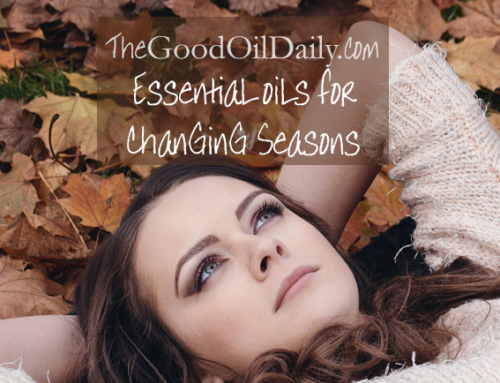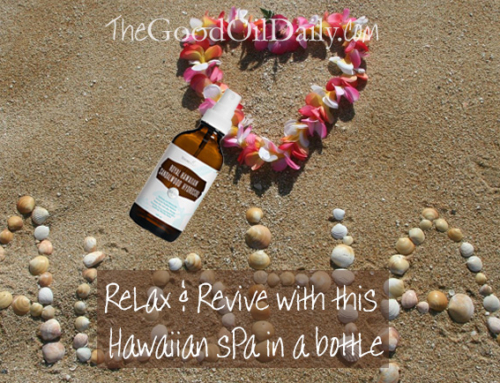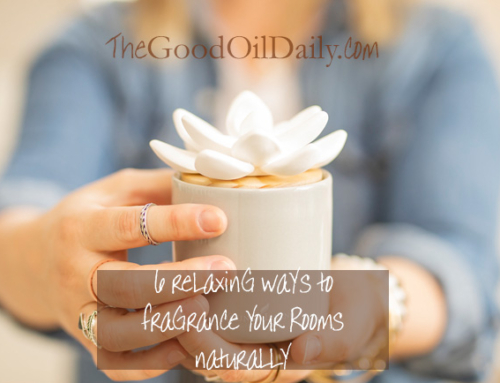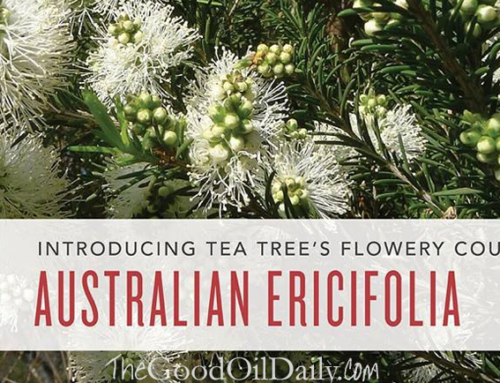Talc, bismuth, parabens, phthalates, petrochemicals, nanoparticles, synthetics … no, we’re not talking about the workshop stash at your local car repair place. We’re talking about your cosmetics bag!
Unless you’ve made the switch to natural make-up, you’ll find these names cropping up to varying degrees in pretty much all the cosmetics out there.
It’s awesome that you’re working on eliminating harmful ingredients from your home cleaning products and your personal care products – that’s quite probably how you’ve ended up here on our site where we help you to find natural essential-oil based solutions to – well, everything!
But it’s so easy to overlook what you’re putting on your skin, eyelashes, eyelids and lips every day.
Our skin is our largest organ and applying make-up to our skin is every bit as important to consider as what you’re washing and moisturising with – possibly even more so because we apply it in the morning and much of it remains until the end of the day when we cleanse it off.
That’s eight plus hours a day on average that those ingredients are on your skin and being absorbed for at least some decent chunk of that time.
Have a think about your lipstick, too! A tiny bit goes down the hatch every time you wear it, exposing you to constant trace amounts.
Each woman wearing lipstick is estimated to consume around 3.175 kilograms / seven pounds of lipstick in their lifetime. That doesn’t sound much, but say that’s 50 years of make-up wearing: this equals 63.5 grams per year of lipstick. That’s more than the weight of a Mars bar each year (51g at the time of writing).
Consider that the typical list of ingredients in lipstick includes such ingredients as trioctyldodecyl citrate, ozokerite, polybutene, ethylhexyl palmitate, octyldodecyl neopentatnoate, pentaerythrityl tetraisostearate, bis diglyceryl polyacyladipate 2, paraffin, silica and synthetic (the ultimate catch-all!) – do you really want to eat a Mars bar’s weight of these charmers over any period of time, let alone one a year?
Or would you rather use a lipstick that contains ingredients such as Ricinus communis (Castor) seed oil, Prunus amygdalus dulcis (Sweet almond) oil, Euphorbia cerifera (Candelilla) wax, Beeswax, Tocopheryl. I know what I’d choose.
Just to focus briefly on the possible challenges with common ingredients in make-up across most brands currently on the market, let’s look at talc.
Talc is a naturally occurring mineral which consists of magnesium, silicon, oxygen, and hydrogen.
Specifically with regards to make-up, it’s found commonly in eyeshadow, foundation and lipstick.
The main area of concern is that talc can be contaminated with asbestos. Due to this, it’s also difficult to determine if the health risks stem solely from talc that contains asbestos, or if there are other qualities in the talc that also cause health issues. The upshot is that talc is known to cause irritation, cancer, tumours and organ toxicity, with women, children and people exposed to it regularly at the highest risk. The reason women and children are likely at a higher risk is due to their use of the products that commonly contain talc. You can view a comprehensive list of possible effects and the research article links here at the Safe Cosmetics website.
The FDA in the States did a study to assess levels of asbestos across a range of cosmetics they tested, and while they all came up as Not Detectable levels, the FDA concluded that with only four of the nine suppliers they contacted requesting samples complying, the results are not a conclusive determination of safety of talc as an ingredient. (Read the full report here.)
“The survey found no asbestos fibers or structures in any of the samples of cosmetic-grade raw material talc or cosmetic products containing talc. The results were limited, however, by the fact that only four talc suppliers submitted samples and by the number of products tested. For these reasons, while FDA finds these results informative, they do not prove that most or all talc or talc-containing cosmetic products currently marketed in the United States are likely to be free of asbestos contamination. As always, when potential public health concerns are raised, we will continue to monitor for new information and take appropriate actions to protect the public health.”
Now, I don’t know about you, but I’d rather have the peace of mind of avoiding products that contain ingredients that are so questionable. Why take the chance?
Thankfully, Young Living has now added a gorgeous, vibrantly natural range of make-up to their offerings, free of talc and a bunch of other potential nasties!
This will also connect you up with The Good Oil Team for our personal support and coaching. We'd love to help you on your journey to vibrant well-being the natural way!
Any questions? Please get in touch via our Contact page.
Young Living is our favourite trusted source of essential oils and all kinds of safe, lavish skin care, personal care, cleaners, foods and supplements that are all free of known toxic ingredients and enhanced with their divine genuine essential oils, grown on their own farms or by farmers they have thoroughly assessed and have agreements in place.
And now, you can replace everything in your make-up arsenal with their mineral make-up and know that you’re caring for your skin beautifully. The range contains foundation and misting spray, bronzer, blush, eyeshadow, lipstick and lipgloss, multitasker for brow filling, eyeshadow and eyeliner, veil (translucent powder) and brushes to take care of all application needs.
As you’d expect for a natural range like this, another huge benefit is that all Young Living products, including their Savvy Minerals by Young Living™ makeup line are cruelty free and have never been tested on animals.
What you will find in Savvy Minerals by Young Living™:
- Aspen bark extract (an effective natural preservative in cosmetics)
- Mica (a naturally occurring mineral with a sheen effect, mined in the US and guaranteed by Young Living’s supplier that no child labour was involved; levels are well within safe use and used in place of harsh dyes and harsh chemicals)
- High-quality minerals
- Naturally derived ingredients
What you won’t find in Savvy Minerals!
- talc
- bismuth
- parabens
- phthalates
- petrochemicals
- nano-particles
- synthetic fragrance
- synthetic colorants
- cheap synthetic fillers that are usually found in other leading brands
The Savvy Minerals by Young Living™ makeup line has been tested for heavy metals using an ICP method and either an ICP-MS or an ICP-OES instrument and complies with all Australian safety regulations for heavy metal content by meeting or exceeding the specifications set by the TGA.
You can read more about Savvy Minerals by Young Living™ and view the entire range here . When you’re ready to order, please be sure to click here to start your joining and ordering process so that you’ll become part of our Good Oil team.
These products have beautiful blendability and impart a natural look.
French women are renowned for applying make-up so that it looks like you’re not even wearing any while making you look your best – covering imperfections without wearing a mask, and using colours found in nature. Timeless and classic. With Savvy Minerals by Young Living™ you can achieve this easily and effortlessly. After you’ve joined, you’ll find quick How To videos in your virtual office that will have you using your new make-up like a pro in no time.
You can reach out to us on our Contact page if you have any questions at all – please do!
This will also connect you up with The Good Oil Team for our personal support and coaching. We'd love to help you on your journey to vibrant well-being the natural way!
Any questions? Please get in touch via our Contact page.






